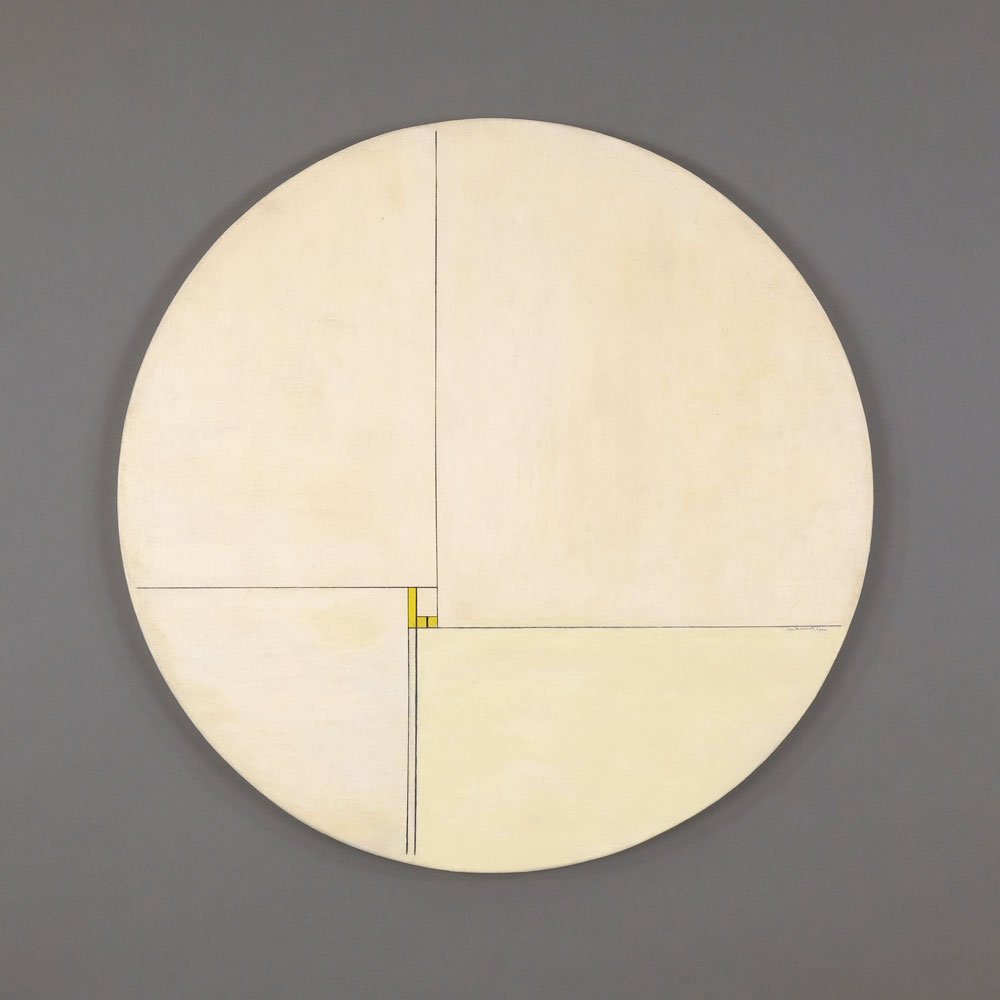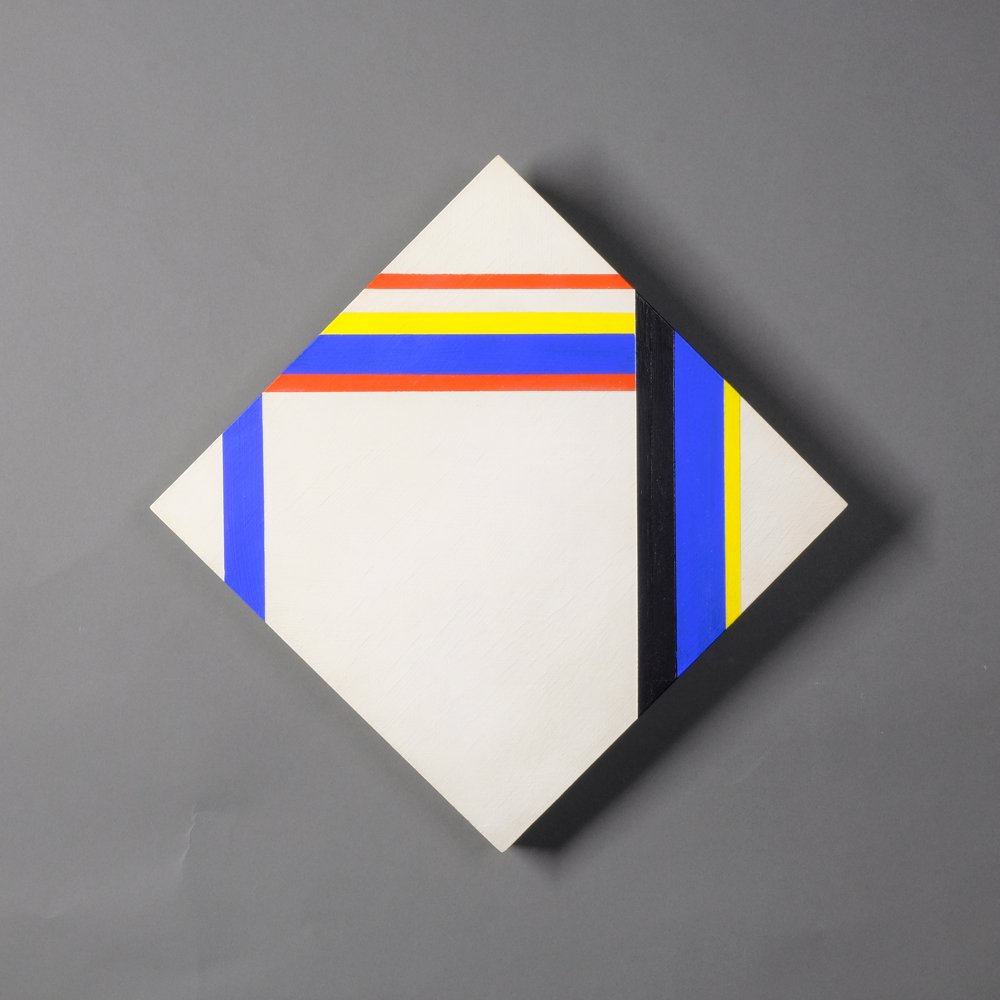Image Source: WIKIPEDIAILYA BOLOTOWSKY
1907-1981
Ilya Bolotowsky had a legendary career that involved painting, sculpture, mural production, as well as teaching and also filmmaking. He was an idealist who constantly embraced new trends in search for order and balance in response to his tumultous upbringing in Russia.
Bolotowsky was a socially progressive thinker who devoted his life to enriching the abstract tradition. He found that the geometric discipline of the cerebreal Neoplasticism exemplified by Piet Mondrian was a way to express his desire for a dynamic equilibrium. His geometric abstractions of the 1950s achieved a sophisticated balance of linear spatial divisions and striking color tonalities.
In a review of his 1974 retrospective at the Guggenheim Museum, which traveled to Washington D.C.'s National Gallery, he had his work singled out as scarcely human, commanding a design sense of tremendous power and flexibility.
Source: Butler Institute of American Art
ILYA BOLOTOWSKY BIOGRAPHY
-
Ilya Bolotowsky was dedicated to abstraction, an allegiance reflected in his paintings, teaching, and interactions with other artists. He was a founding member of American Abstract Artists, a collaborative of like-minded artists formed in 1936. The group attempted to define abstract art for American audiences who were used to regionalism and social realism. “Our purpose is to unite abstract artists residing in the United States, to bring before the public their individual works, and in every way possible to foster public appreciation for this direction in painting and sculpture.”
Bolotowsky was born in Petrograd, Russia, prior to the Russian Revolution, and immigrated to the United States in 1923. From 1924 until 1930, he pursued a traditional course of study at the National Academy of Design in New York, and his early work was figurative. Following travel abroad in 1932, his painting underwent a change in style toward expressionism. The most significant turning point came in 1933 when Bolotowsky saw paintings by Dutch artist Piet Mondrian from the Albert E. Gallatin collection at New York University. From that point forward, Bolotowsky aligned his work with Neoplasticism, which he defined as totally void of representational associations and spatial illusion. Mondrian, the preeminent Neoplasticist, espoused a clean and pure form of abstraction that ultimately resulted in grid-like arrangements of primary colors on a field of white marked off by black lines. In contrast, Bolotowsky generally found little need for black lines to separate color areas and employed a broader spectrum of hues.
About the same time, Bolotowsky encountered the work of Joan Mirò, the Spanish artist known for his biomorphic abstractions. Bolotowsky attempted to synthesize the rectilinearity of Neoplasticism with organic shapes in a memorable pair of murals. His 1937 mural for Brooklyn’s Williamsburg Housing Project was completed under the auspices of the Works Progress Administration, for whom the artist worked between 1935 and 1939. A second panel—measuring ten by sixteen feet—was commissioned for the Hall of Medical Science at the 1939 New York World’s Fair. By the time he set to work in 1938–1939 on a fifty-foot painting for the Hospital for Chronic Diseases on Welfare Island, New York, all traces of biomorphism had been eliminated. Bolotowsky spent the war years, 1942 to 1946, as an Army translator based in Alaska.
While his work was often compared to Josef Albers who delighted in the spatial tensions of color, Bolotowsky’s objective was a totally two-dimensional surface. The two artists’ careers intersected from 1946 to 1948 when Albers took a sabbatical leave from Black Mountain College and Bolotowsky was engaged as his replacement. Their art was different, and so were their teaching styles. As a product of the National Academy, Bolotowsky was the more conventional of the two, encouraging the examination and copying of other artists; he also believed in the merits of student exhibitions, was more gregarious, and enjoyed the company of his students, such as Kenneth Noland.
After his experience at Black Mountain, which he labeled “a self-centered and closed community,” Bolotowsky taught at the University of Wyoming, from 1948 to 1957; at Brooklyn College, 1954–1956; at State Teachers’ College, New Paltz, New York, 1957–1965; at Hunter College, New York, 1963–1964; and at the University of Wisconsin, 1965–1971. He applied his refined form of abstraction to canvases of unusual shapes: diamonds, lozenges, and ovals, as well as three-dimensional columnar constructions. Toward the end of his life, Bolotowsky gravitated away from painting, turning instead to film and playwriting.
askART.com









1979
Oil on canvas
12 x 3 3/4 inches
Signed and dated lower right
INQUIRE